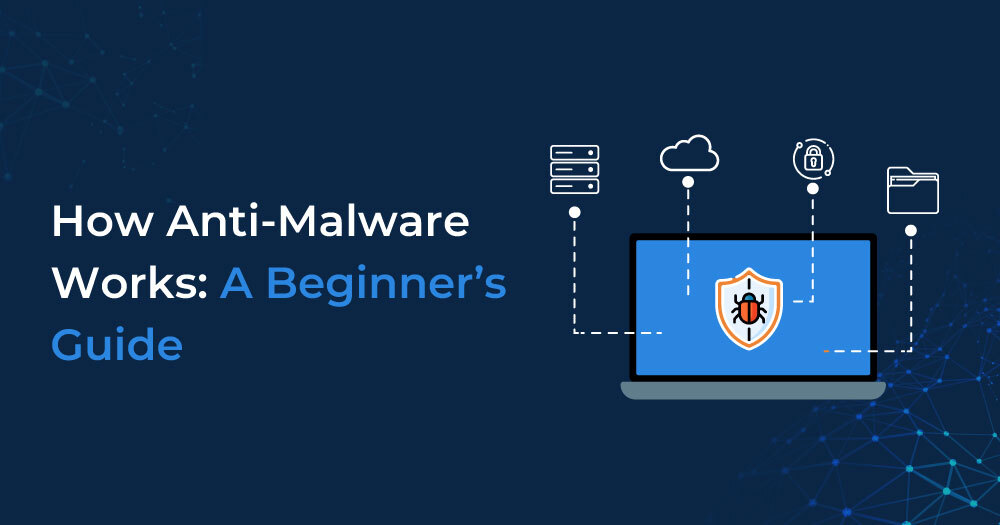As digital threats evolve, anti-malware software is no longer optional but essential. “Malware” encompasses various malicious software aiming to infiltrate computers or networks. The top five types are:
- Worms: Self-replicating programs damaging computers or networks.
- Trojan Viruses: Deceptive programs disguised as harmless files or URLs.
- Spyware: Collects user information and sends it to threat actors.
- Adware: Displays ads to users without consent.
- Ransomware: Restricts system access until a ransom is paid.
Robust anti-malware solutions are crucial for protection against these evolving dangers.
What is Anti-Malware?
Antimalware software is designed to scan, detect, and remove malware, also known as malicious software, from infected systems or networks.
It protects individual systems or entire business networks from malware such as viruses, computer worms, ransomware, rootkits, spyware, keyloggers, etc. Antimalware can be installed on PCs, server gateways, or dedicated network appliances. Effective antimalware tools include features like anti-spyware and phishing protection for comprehensive security.
How Anti-malwares work?
Antimalware programs utilize three strategies to safeguard systems from malicious software: signature-based detection, behavior-based detection, and sandboxing.
- Signature-based malware detection : Signature-based malware detection uses known software components and their digital signatures to identify new malicious software. Software manufacturers create signatures to identify particular harmful software. The signatures are used to mark new software as malware and to detect malicious software of the same type that has already been discovered. With many of the same traits, this method works well against typical spyware such as adware and keyloggers.
- Behavior-based malware detection : Behavior-based malware detection helps computer security professionals more quickly identify, block, and eradicate malware by using an active approach to malware analysis. Behavior-based malware detection identifies malicious software by analyzing behavior instead of appearance. It aims to supersede signature-based detection and often utilizes machine learning algorithms.
- Sandboxing : Antimalware software has a security feature called sandboxing that allows it to separate potentially dangerous files from the rest of the system. Sandboxing is a commonly employed technique to identify and eliminate files that may pose a threat to system security.
For instance, the sandbox will launch a file from an unknown email attachment and only provide it access to a restricted range of resources, such a temporary folder, the internet, and a virtual keyboard. The file will be blocked and the sandbox has the power to end it if it attempts to access other programmes or settings.
Uses of Anti-malware
The value of antimalware software extends beyond file scanning for viruses. It aids in preventing malware attacks by scanning incoming data to halt malware installation and computer infection. Moreover, it identifies advanced malware forms and defends against ransomware assaults.
Antimalware software offers the following benefits:
– Blocks users from accessing malware-infected websites.
– Halts malware spread within a computer system.
– Provides infection statistics and removal timeframes.
– Offers insights into malware intrusion methods.
Regular use of antimalware ensures a malware-free computer, maintaining smooth and secure PC operation. Effective antimalware software detects numerous threats with minimal updates, running discreetly in the background without system slowdown. Numerous free antimalware programs are available to safeguard computers from malware infections.
Differences between antimalware and antivirus
While malware and viruses are often used interchangeably, historically they did not always mean the same thing. A virus is a type of malware, but not all malware is viruses. Viruses are the most common type of malicious code used to access a computer or data network to cause harm. Viruses were considered older threats like Trojan horses, keyloggers, and worms. A virus can replicate itself, while malware is a program that aims to achieve a specific goal but doesn’t self-replicate. Malware is now used to refer to newer, more dangerous threats spread through malvertising and zero-day exploits.
Similarly, the terms antivirus and antimalware are frequently interchanged, yet they originally denoted distinct types of security software. While both were created to tackle viruses, they were developed for different purposes and to address diverse threats. Presently, both antimalware and antivirus software execute identical or comparable functions.
Conclusion
The need for strong anti-malware solutions is crucial due to the ever-changing digital threats like worms, viruses, spyware, adware, and ransomware. Understanding these risks is vital for protection. Anti-malware software detects and prevents threats using techniques like signature-based detection, behavior analysis, and sandboxing. Investing in effective solutions enhances system security, ensuring smooth operations and peace of mind for users and businesses.
